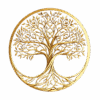Explore the Slavic hero archetype. The deities that protected the land, harvest and people from dark forces. They faced trials with courage and steady resolve.

Archetype Overview
The Slavic Hero Archetype: Born of Flame, Bound to the Land
Long ago, when gods still walked the earth, heroes rose from soil and storm. They came not for glory but to guard. Their hearts burned with purpose. Each one was a light against the dark. These were the Slavic heroes—chosen by the divine, shaped by fate.
Kresnik fought the evil spirits and the Vulkodlak. He healed the land and fought demons with fire. Silniy Bog, fierce and mighty, stood against chaos with raw strength. Though their powers differed, they shared one goal. The Slavic Hero Archetype lived in each of them. A sacred pattern. A guardian spirit. A protector bound to the rhythms of harvest, storm, and sky.
Deities’ Summary Pages
Archetype Characteristics
Heart of the Storm: Key Traits of the Slavic Hero Archetype
The Slavic hero was no ordinary warrior. He was born from earth and sky. He carried fire in his hands and thunder in his step. This hero lived to protect. He stood at the edge of the world, where shadow met light.
Strength marked his body, but his spirit held more. The Slavic hero fought for balance. He guarded the harvest. He kept the peace between gods and mortals. His courage ran deep—steady as mountain roots. Even when afraid, he stood tall. He did not fight for power. He fought because the land called to him.
Each hero followed a path laid by fate. He faced monsters, both outside and within. He burned with purpose. His strength came not from pride but from service. His victories fed the people. His pain became their safety.
The Slavic Hero Archetype was both a legend and a lesson. He reminded all who heard his tale—that true power lies in sacrifice.
Deities’ Detailed Write-Ups
Archetype Role In Myths
The Eternal Guardian: Role of the Slavic Hero Archetype in Myth
In Slavic myth, the hero did more than fight. He held the world together.
He stepped into chaos when others fled. He faced storms, beasts, and burning skies. These stories needed him. Without the hero, the balance broke. Crops withered. Evil spread. People despaired. He was the force that turned fear into hope.
The hero’s journey shaped the myth. Each tale followed his rise, fall, and return. He faced trials that tested his soul. Fire, shadow, and silence stood in his way. But he kept going. His actions moved gods and men alike.
The Slavic Hero Archetype served as a bridge. He linked heaven, earth, and the underworld. He made myths breathe. Stories of light, sacrifice, and rebirth came to life through him. His role was never small. He was the spine of the tale—the one who carried the weight of the world.
Significance of Archetype in Antiquity
Flame and Soil: The Deeper Meaning of the Slavic Hero Archetype
The Slavic hero archetype deity meant more than strength. He was the soul of the people.
In every tale, he rose to protect—not just lives but the land itself. He stood for harvests, for home, for the turning of seasons. His fight was never only against monsters. It was against hunger, fear, and the fading of light.
This hero walked with both gods and mortals. He carried divine fire but lived among the fields, which made him sacred and loved. His struggles mirrored those of those who told his stories.
When winter bit deep, they remembered his warmth. When crops failed, they prayed to his courage. He gave them hope. He taught that even one person, brave and steady, could change fate.
The Slavic Hero Archetype became a symbol—of balance, sacrifice, and the will to endure. His story belonged to the earth and to all who called it home.
Archetype Applications In Modern Settings
The Slavic Hero Today: Echoes of an Ancient Flame
The Slavic hero still walks today — just in new shapes and stories.
He lives in those who protect, who heal, who stand when others fall. He appears in quiet acts of courage. A teacher who guides. A farmer who endures. A firefighter who runs into flame. These are today’s myth-makers.
The world changed, but the hero stayed. His sword became a voice, a tool, a choice. He still guards what matters—truth, justice, and the roots of home. He reminds us that strength is not brute force. It’s the will to do what’s right.
In books, films, and dreams, he rises again. He carries old fire into new worlds. The Slavic Hero Archetype still whispers to us—stand tall, protect the light, never yield.









